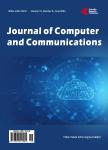Fault Prediction with Static Software Metrics in Evolving Software: A Case Study in Apache Ant
Fault Prediction with Static Software Metrics in Evolving Software: A Case Study in Apache Ant作者机构:Romain College of Business University of Southern Indiana Evansville USA
出 版 物:《Journal of Computer and Communications》 (电脑和通信(英文))
年 卷 期:2022年第10卷第2期
页 面:33-45页
学科分类:08[工学] 0812[工学-计算机科学与技术(可授工学、理学学位)]
主 题:Software Engineering Fault Prediction Software Metrics Machine Learning
摘 要:Software testing is an integral part of software development. Not only that testing exists in each software iteration cycle, but it also consumes a considerable amount of resources. While resources such as machinery and manpower are often restricted, it is crucial to decide where and how much effort to put into testing. One way to address this problem is to identify which components of the subject under the test are more error-prone and thus demand more testing efforts. Recent development in machine learning techniques shows promising potential to predict faults in different components of a software system. This work conducts an empirical study to explore the feasibility of using static software metrics to predict software faults. We apply four machine learning techniques to construct fault prediction models from the PROMISE data set and evaluate the effectiveness of using static software metrics to build fault prediction models in four continuous versions of Apache Ant. The empirical results show that the combined software metrics generate the least misclassification errors. The fault prediction results vary significantly among different machine learning techniques and data set. Overall, fault prediction models built with the support vector machine (SVM) have the lowest misclassification errors.



